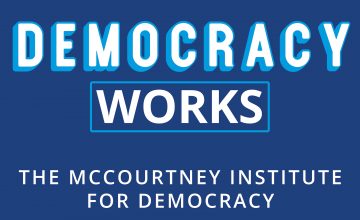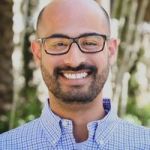Podcast: Play in new window | Download | Embed
Subscribe: Apple Podcasts | Spotify | Email | TuneIn | RSS | More

Tommie Smith is a true living legend. He won a gold medal in the men’s 200 meter event at the 1968 Olympics, setting a world record in the process. When he took the medal stand in Mexico City that day, he made history again by raising a black-gloved fist during the National Anthem.
As you’ll hear, Tommie didn’t grow up in a political family and didn’t see himself as an activist when he enrolled at San Jose State University. That changed when he met Dr. Harry Edwards and became involved with Olympic Project for Human Rights, where he found his voice and used it to speak out against racial segregation in sports and elsewhere.
When Tommie and teammate John Carlos raised their fists on the podium in Mexico City, many interpreted the gesture as a symbol of the Black Power movement. However, as Tommie says, the action was not necessarily about one cause or movement. Rather, it was a symbol of a broader struggle for power and equality.
Tommie visited Penn State as part of a yearlong look at the events of 1968 organized by the College of the Liberal Arts.
For more on the relationship between athletes and protests, check out our episode with Abe Khan, who has studied this topic extensively and draws comparisons between Smith and modern-day athletes like Colin Kaepernick.
Interview Highlights
[5:10] What was your family like? Did you come form a political family? Did you talk politics at dinner or attend political rallies?
Tommie: No, Just the opposite. My family was a sharecropper background. My father actually had no education. My parents met in Texas and we were just sharecroppers. We had no political background, but there were issues in society and the system that we knew nothing about because of where we were. We worked from grass roots up until I got to the junior or senior year of high school, and that is the time social change began. I was just in time to see it. Before I read about it, I lived it. When I read about it, I remember those times. Not in the south, but in California which shadowed the south in terms of the field work.
[6:52] Were you drawn there (San Jose State) because of Dr. Edwards? How did all of those pieces come together?
Tommie: There were many colleges looking to recruit me. The last two colleges out of about thirty six were San Jose and USC. I visited USC. It was a little big. They shouldn’t hav taken me to Disney Land. It scared the heck out of me. I’m used to two story buildings and that was really high up. I’m from the area of cabins and not buildings. They put me on a blind date which was a no-no. San Jose State was what I wanted academically because I wanted to become a school teacher. So I made a trip to San Jose. It was simple and the buildings were short. It was also a small city.
[8:29] Tell me about meeting Dr. Edwards and making this transition into becoming an activist.
Tommie: Once I started school, he was one of the first people I met at San Jose State. He was a senior as I was coming in as a freshman. The first thing he told he was that there’s no way you can come here with me being here and not carry a book. Whenever I see you, carry a book even though you don’t read just so I think you’re reading. So I got a feel for him and his educational power when I first got there. That helped me tremendously. So I started carrying a book. Then I started carrying two books. Then I started reading the first one. Then I began to read the second one, and they would become interesting because he would start asking me questions. I was a fast learner because I had to be because I didn’t know very much once I got to San Jose State. Believe in something bigger that you that way you wouldn’t have any problem learning because someone else would help you. That faith of believing in rather than doing myself was my shot right there.
[9:56] Given that you came from this simple background and your parents weren’t very political, what did they think as you started to take on this more activist role and become more political yourself?
Tommie: My mom and my dad didn’t know enough about the educational process, especially on the political side to ask me questions about what I was doing. They heard about it. There were people in town who would let them know that Tommie is doing pretty good. The town was a predominantly white town and they (the family) would receive a lot of threats because of what there son was doing and saying. I heard these things through my younger brothers and sisters. I was trying to make a decision as to what I should do. I learned how to take shots and how to take abuse on both ends and still make a path in the center and that’s what made me stronger in my competitions and my academic needs while in college.
[11:47] Jumping forwards to the 1968 Olympics, can you talk about some of the different pressures you were facing going into that final meet?
Tommie: My personality was very quiet in college. I talked very little unlike now. Sometimes I didn’t talk at all during the day even in class. When I started talking, that was freedom for me because I became free to do things, which moved me into using competition and athletics to expound upon my feelings and the necessity in society for equality. Because of my athleticism, I had a platform to speak sensibly because I had a background of doing to others as I wanted done to me. Unfortunately, this was not the situation so I had to fight for that equality. This took me to the Olympic Project for Human Rights which was started by Dr. Edwards on the campus of San Jose State. I was recruited to talk about competitions, but this also gave me the opportunity to talk about the advancement of man equally. And that it what got me in trouble. But those getting in trouble for this are some of the most important people you can be around. This brought the pride of not being afraid to talk about those things. That’s highlighted a lot of issues even today. Today, young people are standing up because they’re no longer afraid.
[14:25] Do you think it’s easier today for young people to stand up and make their voices heard than it was for you and your colleagues?
Tommie: There is not such thing as easy because it saddens the human being to think that you’re being overlooked. There is also a sacrifice in speaking out for young people because they are being disallowed to do things because they’re standing up for the right of students to move forward. My personal thought, you can’t turn back. There is no relaxing. You have to continue. Those who are being active just to cause problems must be outnumbered by those looking to use this to make advancements socially in life to take the whole rock and move forward.
[17:10] The National Anthem is not a short song. What was going through your mind during that?
Tommie: It is an hour and a half long. That is what it felt like. I was praying during that time. Even though you’re praying and hoping people see this as an ultimate value through sacrifice, that thought doesn’t help that tired arm sticking in the air with the glove on it. This implied the power that is needed for us to move forward as a society. This was not about black power or black panther. This was about human rights. The black love indicated a sight of power. The ramification of that particular move ratifying it as a positive gesture, not a gesture of hate. It takes too much energy to hate. The idea of the glove represented power. Being a black athlete, they saw it as black power. Fine, but it was not “black power” in the sense of implicating voice. The rolled up pants with the socks represented poverty and the need to end poverty. The bowed head represented prayer. I did what I did because I thought there was a need for me to do it.
[21:54] Do you think that the needle on politics crossing over into sports has moved at all over the last 50 years?
Tommie: Politics has been a part of sports since people started sitting down and watching it. If you don’t think that sport has a place for politics then you’re missing the excitement of sport because sport is politics even more so now. At the olympics the flag of each nation was shown. That was a prideful thing because you got to meet other athletes. Athletes then were used for the sensation of making money for the olympic committees. They (heads of committees) were driving nice cars while the athletes were suffering for their lunchmeat at school. Even those on full scholarship like I was. Avery Brundage was a racist person, but he didn’t know anything else to do.
[27:15] What was it like for you emotionally to go from being vilified to being praised and honored?
Tommie: I’m from an area where I was vilified as a child in the fields seeing my parents taunted. My mother died in 1971 because of pressure from that and other things around her. Vilification came way before Mexico City. So when I was vilified following the games I just resorted back to how I handled it back then.

